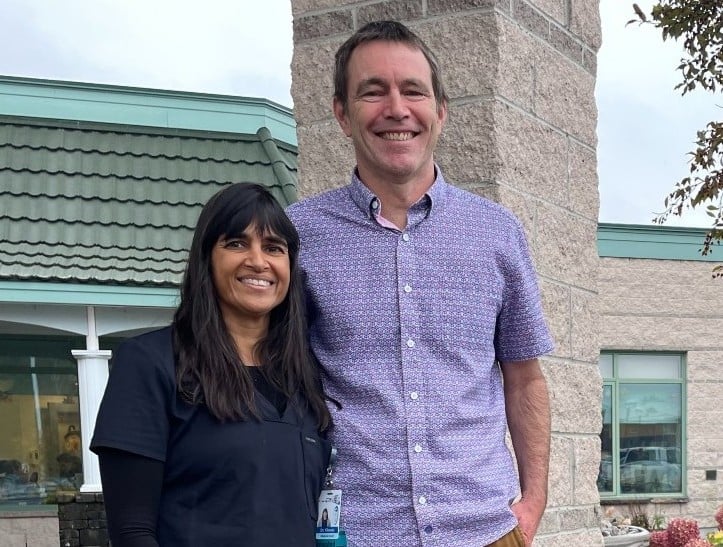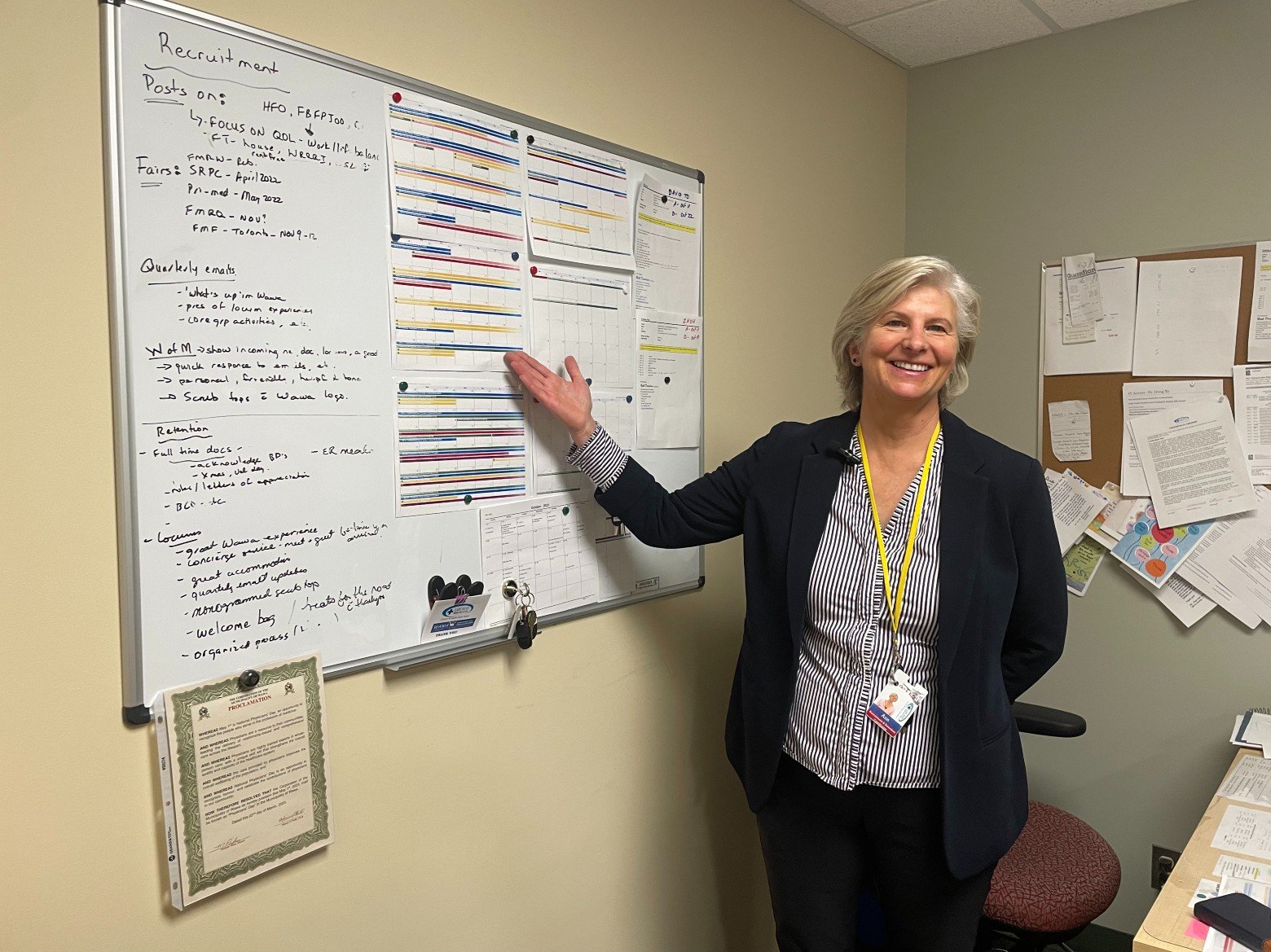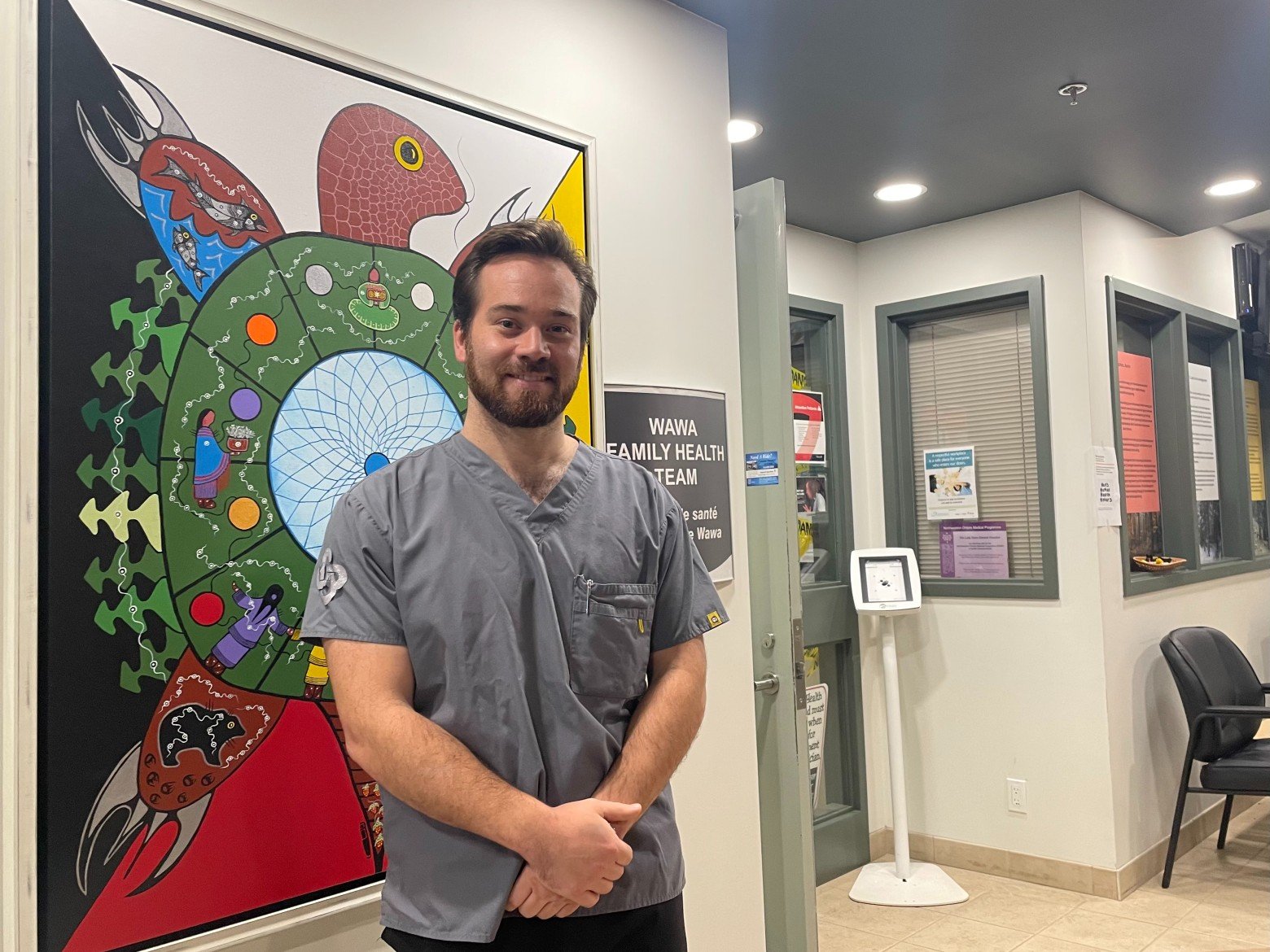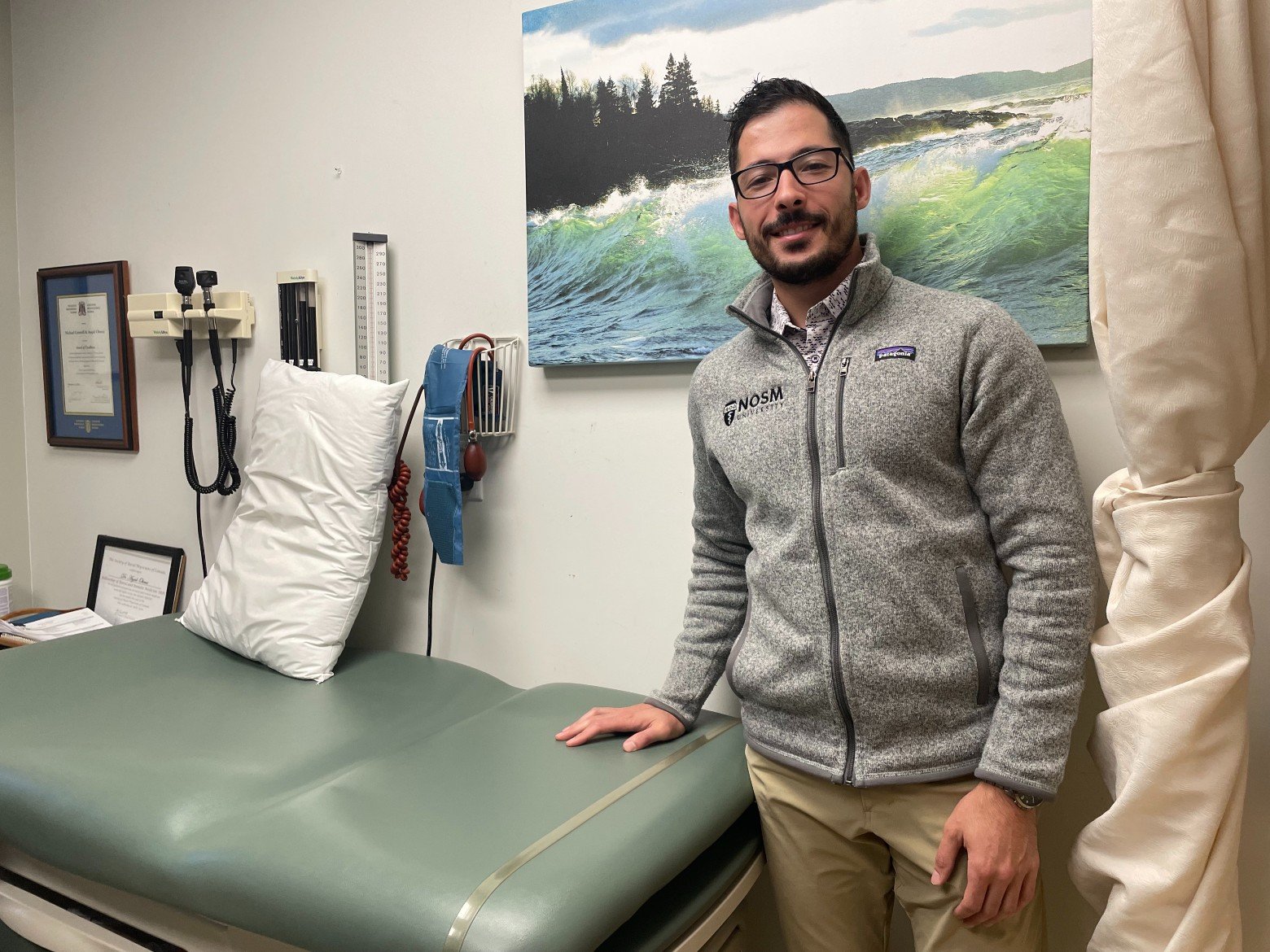Temporary physicians are important to support health care in northern Ontario communities
 Attracting physicians to practise in remote Ontario communities is no small feat.
Attracting physicians to practise in remote Ontario communities is no small feat.
Physician recruiter Ann Fenlon knows that well. The retired pharmacist took on the role in 2021 at Lady Dunn Health Centre in Wawa, Ont. — the town’s only hospital, which provides comprehensive health care to more than 4,300 people in the northern town and surrounding area.
Her focus is recruiting locum doctors and permanent rural generalists to the community where she grew up.
Locum coverage is critical to managing Wawa’s enduring physician shortage. Like many northern, rural and remote communities, Lady Dunn has long depended upon temporary physicians, who fill in for emergency department and clinic shifts.
“Our locums are very important to the ongoing operations and the continuing recruitment and retention component for our core group physicians,” said Fenlon.
Locums are trained and certified general practitioners who take on temporary placements, offering support to often under-resourced health teams. They relieve permanent physicians from consecutive 24-hour emergency department shifts, fill in for vacations and continuing professional education, and cover maternity/parental leave and other practice vacancies. Coverage can be as short as a few days or span several months.
 Since 2019, Lady Dunn’s roster of permanent rural generalist physicians has dwindled from six to two, leaving just husband and wife Drs. Mike Cotterill and Anjali Oberai. Other physicians either relocated, retired or resigned from their positions over the years. A collaborative effort between the Wawa Medical Group and family health team, Lady Dunn Health Centre, the Ministry of Health and the municipality of Wawa led to the hiring of a new full-time physician and previous locum, Dr. Matthew Breton, in January, boosting the physician roster to three.
Since 2019, Lady Dunn’s roster of permanent rural generalist physicians has dwindled from six to two, leaving just husband and wife Drs. Mike Cotterill and Anjali Oberai. Other physicians either relocated, retired or resigned from their positions over the years. A collaborative effort between the Wawa Medical Group and family health team, Lady Dunn Health Centre, the Ministry of Health and the municipality of Wawa led to the hiring of a new full-time physician and previous locum, Dr. Matthew Breton, in January, boosting the physician roster to three.
Drs. Anjali Oberai, left, and Mike Cotterill have been rural generalist physicians at Wawa’s Lady Dunn Health Centre for more than 25 years.
But Fenlon can vouch for the challenges of recruiting permanent rural physicians to the north. The more remote the community, the less attractive it is for physicians to relocate, she said. Wawa is more than 250 kilometres from Sault Ste. Marie, Ont., or a 2.5-hour drive along the Trans-Canada Highway. Being far away from friends and family is the biggest deterrent.

“Our locums are very important to the ongoing operations and the continuing recruitment and retention component for our core group physicians”
— Ann Fenlon, physician recruiter
“Physicians of all types are in short supply across Ontario, but the niche rural generalist physician that we’re looking for, who can practise in a remote northern Ontario community, we have to source from an even smaller pool,” Fenlon said.
Hence, the reliance on locums, who are also challenging to recruit, noted Dr. Cotterill. With fewer permanent rural physicians — tied to the province-wide primary care crisis — comes an increased demand for locums. Yet many locums may not want to work in environments like Wawa’s, which are understaffed and lack resources, he said.
“The fewer (physicians) you have, the less attractive it is for a new doctor to come here. It might be more daunting or intimidating to think of practising here.”
While locum support is desperately needed to keep Lady Dunn operating, it is not a realistic long-term solution to fix Wawa’s doctor shortage, added Dr. Oberai.
“We need permanent rural generalists living in the community to provide continuity of care to patients, develop relationships with patients and sustain health care,” she said.
Locum programs were set up in the early 2000s to provide physician coverage, particularly in understaffed EDs at risk of closing, supporting permanent rural generalist physicians by taking on 24-hour ED shifts, in addition to clinical work.
Though once considered a temporary fix, they are now an integrated, broader part of the health system. Use of the rural locum programs for on-call physician coverage, for example, increased from 23 to 42 per cent between 2019 to 2022, according to the Northern Ontario School of Medicine.
Three locum programs — Rural Family Medicine Locum Program, the Emergency Department Locum Program and the Northern Specialist Locum Program — run by HealthForceOntario (HFO) each address a specific health-care gap. The RFMLP, for example, used by Wawa, focuses on the recruitment and retention of family physicians in the north.
Within Rural and Northern Physician Group Agreements, permanent rural physicians receive up to 37 respite days per year for vacation and professional development, while additional funding is provided for up to six months for longer-term vacancies, such as when permanent physician roles go unfilled.
But RNPGA communities like Wawa often run out of this vacancy funding when they are unable to fill vacant physician positions within that time frame, said Fenlon. This leaves the permanent rural physicians on site to fill in blanks — such as back-to-back, 24-hour ED shifts — and forces hospitals like Lady Dunn to cut back on services.
“My locum schedule is filled up to May, but the trouble is ensuring that there’s going to be dollars to pay the workers,” Fenlon said. “During the physician shortage crisis climate we are in, we, like every other rural community, are unable to fill our vacant positions. Funding for locum coverage for a vacant practice dwindles over time, essentially penalizing communities working under complement for longer than six months.”

“Losing locum days unfortunately limits the number of physicians we can have caring for patients. But the volumes don’t change — the patients still come in”
— Dr. Matthew Breton, rural generalist physician
Dr. Breton, who worked as a locum in several northern communities for a year and a half before settling in Wawa, believes the only solution is more funding to ensure locum coverage until Wawa’s physician vacancies are filled.
“Losing locum days unfortunately limits the number of physicians we can have caring for patients. But the volumes don’t change — the patients still come in,” Dr. Breton said.
Locums are selected to fill a variety of health-care voids based on their specialty, time committed and communities served. Full-time or returning locums often work in one or a few communities on a repeat basis, allowing for continuity of patient care, relationship-building with health teams and familiarity with the communities they serve. In the north, specifically, locums act as rural generalists, which requires a broader scope of practice and advanced cardiovascular life support (ACLS) and advanced trauma life support (ATLS) certifications.
“Our doctors here have to be comfortable practising in this remote setting without tests or equipment that they would have in other settings,” Fenlon said.
Locum positions are attractive for several reasons, said Dr. Breton. There are no overhead costs, accommodation and transportation expenses are reimbursed by HFO, renumeration is competitive and there are government incentives. The Canada Student Loan Forgiveness program provides temporary reprieve from student debt payments to physicians working up north. And, the Northern and Rural Recruitment and Retention Initiative is a financial grant of up to $124,730 paid out in increments over four years for physicians like Dr. Breton, who set up full-time practice in the north. Community recruiters often help locums with logistics including finding accommodations and arranging transportation.
Locum work also allows physicians to expand their skillset by practising in a variety of clinical settings. Hence, many locums are new graduates fresh out of residency and starting their careers or more experienced doctors who wish to broaden their experience, Breton said.
Medical learners, including undergraduates and residents, at NOSM University must complete placements, in northern communities. This often leads to future locum coverage and even setting up a permanent practice. NOSM medical student Brandon Grandinetti, who completed a two-week placement at Lady Dunn last fall, said students come away with a unique perspective spending anywhere from a week to a month in various northern communities.

“Each northern Ontario community has its own set of challenges … one thing that works in one may not work in the other,” he said.
Health centres lead locum recruitment, onboarding and retention efforts, offering support to new locums. Lady Dunn, for example, works with the North Algoma Medical Recruitment and Retention Collaboration — a partnership between the hospital, Wawa Medical Group and the municipality of Wawa — to do so. Lady Dunn’s “live rent-free in Wawa” program provides complimentary accommodation in designated houses for up to two years to physicians who sign on full time and relocate to Wawa. This housing is also used for locums when vacant.
“The houses are top-notch, giving the locum physician an opportunity to see themselves living here in a very nice house, full time,” Fenlon said.
Orientations also familiarize doctors with the community’s services and amenities, which in Wawa includes activities such as cross-country skiing, skating, curling, hiking, kayaking and mountain biking.
Medical student Brandon Grandinetti completed a two-week placement at Lady Dunn Health Centre in Wawa, as part of a mandatory placement program at NOSM University.
“When you’re coming up to the north to do a locum, it’s generally well compensated, no matter where you go,” Fenlon added. “But in Wawa, we really try to make the experience exceptional for our physicians.”
Dr. Breton knows this first-hand. His decision to transition from locum to permanent physician at Lady Dunn brought him the lifestyle stability, colleague comradery and community connection he yearned for.
“I was tired of living out of a suitcase and felt ready to slow down. It’s nice to have somewhere to lay your head,” he said. “Having been to Wawa so many times, I have built connections here. The beautiful landscape and variety of activities; the friends my partner and I have attained here make it feel familiar and welcoming.”
Work-life balance, he said, very much depends on how many physicians are in-house and whether locum support remains consistent at Lady Dunn. What keeps Dr. Breton in Wawa may very well depend on that.
“It’s a very collaborative environment and everyone’s trying to support and strengthen one another because we have enough challenges as is.”
The OMR spotlights the plight of physician couple Drs. Anjali Oberai and Mike Cotterill, who are surviving a chronic doctor shortage in Wawa, yet unwavering in their commitment to their patients.
Photo credit for all photos: Sophie Nicholls Jones